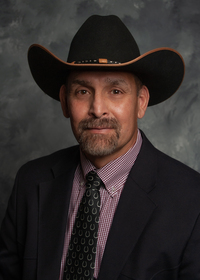Best Management Practices for Effective Pigweed Control
The genus Amaranthus includes plants that are commonly called pigweeds. Palmer amaranth (Amaranthus palmeri) and tall waterhemp (Amaranthus tuberculatus) are summer annual pigweed species that are a major problem for farmers in the United States and other parts of the world. These species grow rapidly, produce large amounts of seeds per plant, and cause significant yield loss.


The life cycle of these species contributes to competition with row crops. They can grow 3 inches per day, and their pollen can travel up to 300 meters and is viable even when the plants are still green. One female plant can produce 300,000 to 1,000,000 seeds per cycle that are very small and difficult to detect or remove from other crops. Seeds can be spread through water movement, agricultural practices such as harvesting and spraying, or dispersal by birds, mammals, and other animals. It is crucial to successfully identify this weed early before the plants grow too large, as herbicide control is more successful on smaller plants.
In the past, producers used glyphosate to control pigweeds. Because glyphosate is a non-selective herbicide with a wide spectrum of weed control and low potential for off-site movement in water and soil, the whole field could be sprayed to control different weeds species. However, many pigweed species, including Palmer amaranth, are now resistant to glyphosate.
Glyphosate-resistant pigweed species are common in Mississippi. Once established in a field, they can be difficult to control. Pigweeds are very competitive with crops for nutrients, water, and sunlight.
Uncontrolled weeds can result in yield losses of up to 90 percent. According to the Weed Science Society of America, weeds cause $27 billion in corn losses and $16 billion in soybean losses annually. The pollen from pigweeds has the potential to transmit herbicide resistance to new populations of Palmer amaranth. Additionally, through hybridization, resistance can be passed to related pigweeds such as waterhemp.
Control Pigweeds and Decrease Further Resistance
There are different methods to control pigweed species and decrease the probability of additional resistance development:
- Use preemergence and postemergence herbicide mixtures.
- Use tank mixes that include herbicides with different sites of action.
- Prevent overuse of herbicides with the same sites of action each year and multiple times in the same year.
- Follow the herbicide label recommendations for herbicide rate and size of weeds at time of application.
While herbicides are highly effective at controlling weed populations, producers may also adopt cultural and mechanical control methods. Cover crops, such as cereal rye and hairy vetch, can reduce Palmer amaranth infestation by 50 percent. In addition, crop rotation is an important cultural practice because it introduces the potential to use alternative herbicide modes of action. Another strategy is using mechanical control such as tillage.
These methods can reduce the number of weeds left to control chemically, eliminating some of the selection pressure from using herbicides alone. Although herbicides are commonly used to control weeds in agriculture, it is important to use alternative weed control strategies and technologies to decrease the possibility of further resistance.
The information given here is for educational purposes only. References to commercial products, trade names, or suppliers are made with the understanding that no endorsement is implied and that no discrimination against other products or suppliers is intended.
Publication 3936 (POD-09-23)
By Tabata de Oliveira, Graduate Student, Te-Ming Paul Tseng, PhD, Associate Professor, Darrin Dodds, PhD, Professor and Head, and Cori Speights, Graduate Student, Plant and Soil Sciences.
The Mississippi State University Extension Service is working to ensure all web content is accessible to all users. If you need assistance accessing any of our content, please email the webteam or call 662-325-2262.




